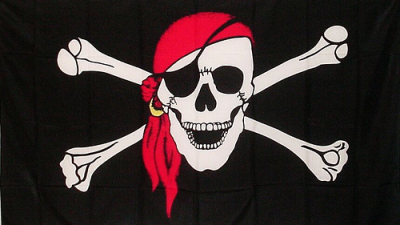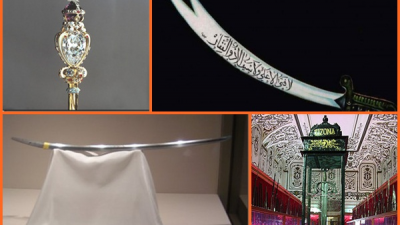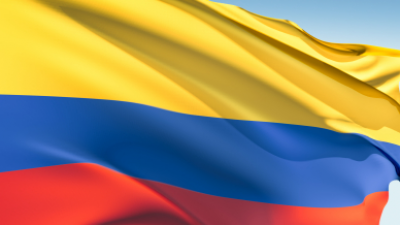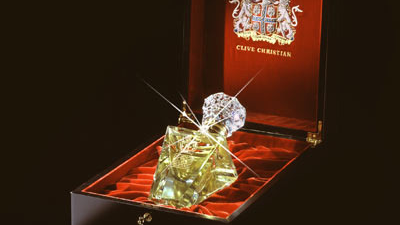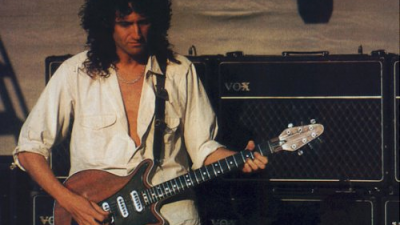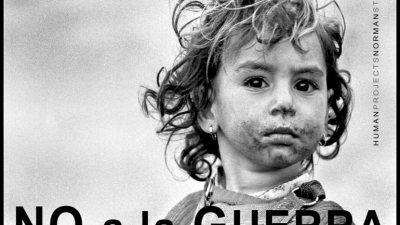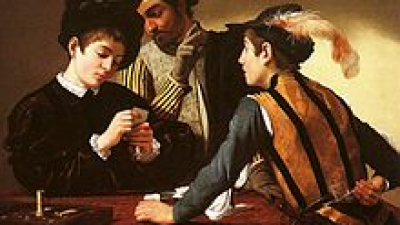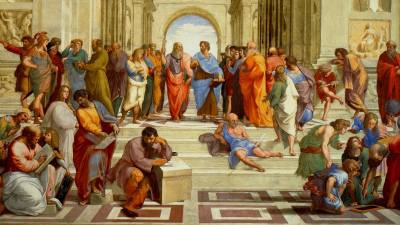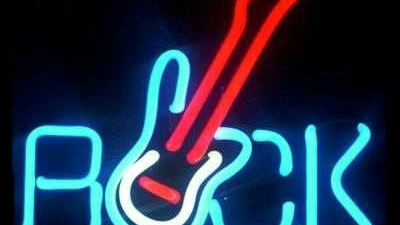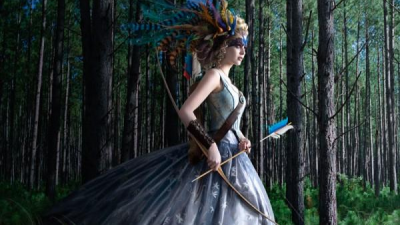The most famous and intrepid explorers in history
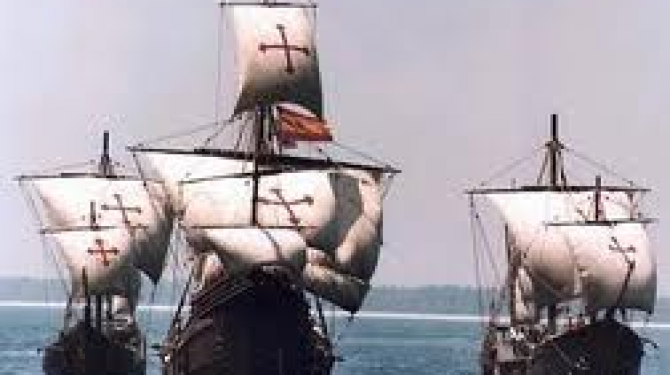
Source: listas.20minutos.es
This is a list of the most famous and intrepid explorers who went out of their way to discover and know the world in which we live. But in their eagerness to explore the unexplored, many of them (if not all), violated the sovereignty and rights of the natives they found on their way, and even spilled the blood of all who disagreed with their ideas . Vote for what you think made the most important discoveries in history
TOP 18:
Lewis and Clark (suggested by Laura Williams)
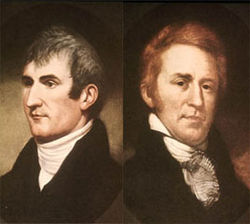
The Lewis and Clark expedition (1804-06), commanded by Meriwether Lewis and William Clark, was the first land expedition that departed from the eastern United States reached the Pacific coast and returned. The Lewis and Clark expedition was the first land expedition in the United States that reached the Pacific coast, but more than a decade earlier, it had been preceded by a British (Canadian) expedition, led by the explorer Sir Alexander Mackenzie in July 1793 , which was the first to complete, by non-indigenous people, the first crossing of the US subcontinent to northern Mexico. "We left Pittsburgh this day at 11 am with a group of 11 people, 7 of whom are soldiers, a pilot and three young men on trial who have offered to accompany me on this trip." With these words, written on August 31, 1803, Meriwether Lewis began his first entry in his travel book in the epic Lewis and Clark Expedition to the Pacific Ocean. Lewis proclaimed that the mouth of the Dubois River (on the east bank of the Mississippi, in front of the mouth of the Missouri River) was the official starting point of the expedition, although the two and a half months it took them to descend the Ohio River can be considered The real beginning. Clark made most of the preparations through letters sent to Jefferson. He bought two large containers and five smaller buckets with salt, a ton of dried pork and medicines.
TOP 17:
Juan Caboto
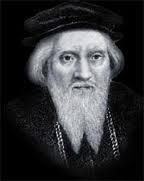
Giovanni Caboto (c.1450 - c. 1499), called in Spanish Juan Caboto and in English John Cabot, was an Italian merchant, navigator and explorer considered one of the first Europeans of the modern era to arrive in 1497 to the mainland from North America He was the father of explorer Sebastián Caboto. Juan Caboto was born around 1450 in Genoa, Italy, according to old documents about his family, although according to other sources he would have been born in Gaeta. By 1461 Caboto was living in Venice and came to obtain Venetian citizenship, a city where he spent his childhood and youth. In approximately 1482 he married a Venetian lady, Mattea, with whom he had three children: Sebastian, Luigi and Santo. Like his father, he dedicated himself to trade with the ports of the Eastern Mediterranean, becoming a marine expert. Valuable goods from Asia, such as spices, silk, precious stones and metals, were brought by land or through the Red Sea to be sold in Europe. Venetians had an important role in this traffic. Henry VII granted Caboto and his 3 children the right to search for islands and pagan countries with 5 ships under the English flag, with the following guarantee: “full and free authority, permission and power to navigate to all parts, regions and coasts of the seas of the East, west and north, under our banners, flags and teachings, with five ships or ships of the cargo and quality that you want and with how many and which sailors and men you want to take with them in the said ships, at your own expense and expense, to find, discover and investigate, be they islands, countries, regions or provinces of pagans and infidels, be they in the parts of the world that before that time were unknown to all Christians ». In 1496 Caboto left Bristol with a ship, but failed to go beyond Iceland and was forced to return because of disputes with the crew. In a second attempt, Caboto left Bristol again with a single ship, the Matthew, a small 50-ton ship and 18 crew, small but fast and capable. He sailed in May (May 2 or 20) in 1497 and sailed out Dursey (latitude 51 ° 36N), Ireland. He arrived on the coast of Newfoundland on June 24, 1497, believing they were the Asian coasts of Cipango. The precise place is controversial, with Bonavista or St John's on the island of Newfoundland and also the island of Cape Breton, Nova Scotia, Labrador or Maine. Corporal Bonavista is the place of arrival officially recognized by the governments of Canada and the United Kingdom. His men may have been the first Europeans to set foot in North America since the Vikings, since Christopher Columbus did not find continental lands in South America until his third trip, in 1498, and the letters referring to a trip by Amerigo Vespucci in 1497, in general, is believed to be fakes or falsehoods. Caboto went ashore to take possession of it and explored the coast for some time, leaving on July 20 back. On that trip, his sailors incorrectly thought they were going too far north, so Cabot sailed a course further south, arriving in Brittany instead of England, and on August 6 he returned to Bristol. Back in England, Caboto was named Admiral and awarded 10 pounds and a new royal patent for a new trip. Later, he was granted a pension of £ 20 a year. The following year, 1498, he again commanded an expedition of 5 ships. One of them returned to an Irish port because of the damage caused in a storm. After repairing, the ship sailed westward again. There was never news of Cabot and his expedition and it is assumed that they reached Greenland in the north and Chesapeake Bay in the south. As of 1499 there is no more news of him. Caboto's discoveries were the basis for English claims about North America.
TOP 16:
Bartolomé Díaz
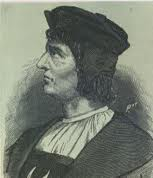
Bartolomé Díaz (in Portuguese, Bartolomeu Dias - 1450 - near the Cape of Good Hope (today South Africa), May 29, 1500) was a Portuguese navigator known for being the first European explorer to turn in early 1488 the southern tip of Africa , arriving at the Indian Ocean from the Atlantic, one of the most important events in the history of sailing. Bartolomé Díaz was the first navigator who sailed away from the coast in the South Atlantic. His trip, continued by Vasco de Gama a decade later (1497-99), contributed to the discovery of the sea route to India. In 1486, King João II entrusted him with the command of a small fleet to travel through southern Africa, with the public purpose of hearing news about the mythical Christian kingdom of Preste Juan, with which the king wished to establish friendly relations and had that same year, by land and on a secret mission, sent to Pêro da Covilhã and João Afonso da Aveiro. The undeclared purpose of the expedition was to investigate the true extent of the coasts of southern Africa, to assess the possibility of a sea route to India. It took Diaz ten months to prepare the expedition and he left Lisbon at the end of July or beginning of August 1487, with two 50-ton armed caravels and a supply ship. On this trip he would be accompanied by Pêro de Alenquer, as pilot of the captain ship, São Cristóvão, who recounted Vasco da Gama's first trip; João Infante, commanding the S. Pantaleão caravel, which was piloted by Álvaro Martins; and Pêro Dias, Bartolomé's brother, commanding the supply ship, with João de Santiago as pilot. João Grego also participated in the expedition and they were accompanied by two men and four black women, captured by Diogo Cão on the West African coast, who would serve as interpreters to explain to the natives the purpose of the expedition. Well fed and dressed, they would be released on the east coast to testify to the local populations of those areas the goodness and greatness of the Portuguese, while collecting information about the kingdom of Preste Juan. The expedition sailed south along the west coast of Africa, first sailing to the mouth of the Congo River, discovered in 1486 by Diogo Cão and Martin Behaim. They were provisioned in the Portuguese fortress of San Jorge de la Mina, on the Gold Coast (currently Elmina, see map). From there they toured the African coast of Angola and then Díaz arrived on December 8 to the Gulf of Santa Maria da Conceição (Walbisbaai, Walvis Bay, in present-day Namibia), the southernmost point mapped by the Diogo Cao expedition. At the end of December 1487 they reached a place near the mouth of the Orange River and erected a stone padrao and called the place Angra dos Voltas. Continuing south, he first discovered Angra dos Ilhéus and towards Port Nolloth, northwest of present-day South Africa, they moved away from the coast and were dragged by a violent storm during the month of January 1488, passing by the south that It is currently called the Cape of Good Hope, without ever seeing it. Thirteen days later, taking advantage of the winds coming from Antarctica that blow strongly in the South Atlantic, they sailed to the northeast, rediscovering the coast, which already had east-west and north orientation (already east of the Cape of Good Hope) and They continued east, mapping several bays off the coast of present-day South Africa (useful in the future as natural harbors). They arrived at Aguada de São Brás (San Blas Bay) (today Mosselbaai, Mossel Bay) on February 3, 1488, which they called two Vaqueiros Bay (Vaqueros Bay). They followed the coast to the east and reached Algoa Bay (700 km east of the Cape of Good Hope) and then reached the Groot-Visrivier River (or Fish River) which they called the Infante River, in honor of João Infante, commander of The second caravel. Díaz's expedition reached its furthest point in the Indian Ocean on March 12, 1488, when they anchored in Kwaaihoek, near the mouth of the Bushman River, where a padrão was built - the Padrão de São Gregorio. Díaz wanted to continue sailing to India, but he was forced to return when his crew refused to go further, due to the shortage of provisions since the ships were quite damaged by the storm. The revolted crew forced the captain to return to Portugal following the west coast line. On the return, always in sight of the coast, they discovered Cape Agulhas, the southernmost point of the continent, and Cape das Storms (Cape of Storms'), now Cape of Good Hope, for being the place where the storm and they had outlined by sea on the outward journey. On this return trip he placed stone padrões at the main points discovered: the current False Island, the tip of the cab
TOP 15:
Leif Eriksson
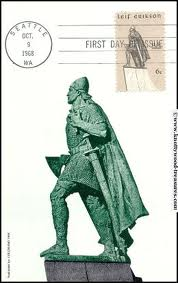
Leif Eriksson (in Old Norse Leifr Eiríksson), nicknamed The Lucky One (Leifr hinn heppni) (c. 970 - c. 1020), was a Viking explorer, considered one of the first Europeans to arrive in North America. His patronymic, Ericson, can also be written as Ericsson, Eiríksson or Erikson. Born in Iceland, Leif was the second of the children of the Norwegian explorer Erik the Red, who in 985 founded the first Viking settlement in Greenland, shortly after being exiled from Iceland. Around the year 1000, guided by the stories of the merchant Bjarni Herjólfsson, he headed west and spent a winter in a land he called Vinland and described as abundant in salmon and grassland. His camp would be the first European settlement in America, five hundred years before Christopher Columbus is believed to be one of the first to discover the American continent without knowing what he had discovered. His brother Thorvald Eriksson was the first European to have contact with Native Americans, and also his first victim. The camp, Leifsbúðir, was located at the north end of the island of Newfoundland, in the place currently known as L'Anse aux Meadows and lasted only a few decades before being abandoned, due to aggressiveness, pillage and especially the continuum harassment suffered by the colonizers by the indigenous (possibly Algonquian).
TOP 14:
James cook
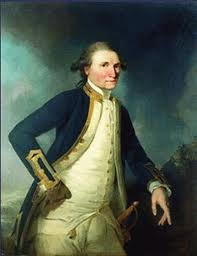
James Cook (Marton, North Yorkshire, October 27, 1728 - Hawaii, February 14, 1779) was a British navigator, explorer and cartographer. He made three trips across the Pacific Ocean, during which large areas were accurately described, and many islands and coasts were first documented on European maps. His greatest achievements were the claim for Great Britain on the east coast of Australia, discovered by the Spaniards in the 16th century; the Hawaiian Islands, discovered by the Spaniard Álvaro de Saavedra in 1527 and the circumnavigation and cartography of Newfoundland and New Zealand. During the Seven Years' War, Cook participated on the site in Quebec City, before the Battle of the Plains of Abraham, in 1759. There he demonstrated his ability for topography and cartography, and was responsible for drawing maps of much of the entrance to the San Lorenzo river during the siege, allowing General Wolfe to launch his attack in a surprising way on the Plains of Abraham. Between 1763 and 1767, Cook drew letters on the irregular shores of Newfoundland; between 1763 and 1764, by the narrow northwest; between 1765 and 1766, the southern coast between the Burin peninsula and Cape Ray; and, finally, the west coast during the year 1767. These five seasons of Cook resulted in the first large-scale and accurate map of the place. They also gave Cook a great command in topographic practice, carried out under adverse conditions, which attracted the attention of the Royal Navy and the Royal Society, at a crucial moment, both in Cook's personal career and in the British face to overseas discoveries. In 1766, the Royal Society hired him to travel to the Pacific Ocean, in order to observe and document the transit of Venus over the Sun. In 1768 Cook sailed under the command of HMB Endeavor from England, surrounded Cape Horn and continued westward through the Pacific, until arriving in Tahiti on April 13, 1769, where observations were to be made. The transit of Venus was predicted for June 3 of that year, so until then it was responsible for the construction of a small fort and observatory. The astronomer designated for the observation task was Charles Green, assistant to Nevil Maskelyne at the Royal Household. The main purpose of the mission was to obtain measurements that could be used more accurately to calculate the distance between Venus and the Sun. If this were achieved, then the distances of the other known planets could be calculated based on their relative orbits. Green, Cook and Solander made measurements separately, which had variations greater than the expected margins of error. The instrumentation they used was adequate for the time, but the methods used did not eliminate the errors. Later, when their results were compared with those of other observers of the same event from other parts of the world, the result was not as conclusive or precise as expected. Once the observations were completed, Cook set out to carry out the second purpose of his trip: look for signs of the southernmost continent in the South Pacific: Terra Australis. The Royal Society, and especially Alexander Dalrymple, believed it should exist; However, Cook had his own doubts about it. With the help of Tupaia, a Tahitian who had great knowledge of the geography of the Pacific, Cook managed to get to New Zealand, being the second European to get there. Abel Tasman, in 1642, had been the first. Cook mapped the entire coast of New Zealand, making only a few minor mistakes. He also discovered the Cook Strait, which separates the North Island from the South Island, which Tasman had not seen. Then he left west, to try to reach the Land of Van Diemen (today Tasmania), which had been seen by Tasman, to establish whether or not he was part of the legendary southern continent. However, they were forced to keep heading further north due to strong winds. When they spotted land, Cook named it Punta Hicks, since Leuit Hicks was the first to spot it. Cook thought it could be Land of Van Diemen, but it was actually part of the southeast coast of Australia, and with this they became the first Europeans known to find the east coast of the continent. The spot sighted is generally calculated as a midway point between the current cities of Orbost and Mallacota, in the state of Victoria. A new reconnaissance of the area, carried out in 1843, renamed the place Cape Everard. For the bieth anniversary of the sighting, the name was officially changed to Punta Hicks again. HMB Endeavor continued heading north, along the coast, keeping the land in sight. Cook mapped and baptized different names to various places. After u
TOP 13:
Juan of the Thing
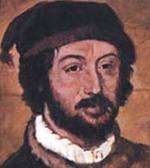
Juan de la Cosa (¿Santoña ?, Cantabria, Spain; between 1450 and 1460? - Turbaco, Colombia; February 28, 1510) [1] was a Spanish navigator and cartographer known for having participated in seven of the first trips to America and for having drawn the oldest preserved map on which the American continent appears. De la Cosa had a prominent role in the first and second voyages of Christopher Columbus to the Antilles and in 1499 he participated as a senior pilot in the Alonso de Ojeda expedition to the coasts of the South American continent. On his return to Andalusia he drew his famous world map and shortly after he embarked again towards the Indies, this time with Rodrigo de Bastidas. In the following years he alternated trips to America under his own command with special commissions from the Crown, including a mission as a spy in Lisbon and participation in the Board of Pilots of Burgos of 1508. In 1509 he undertook what would be his last expedition, of again with Ojeda, to take possession of the coasts of present-day Colombia. The Thing died in an armed confrontation with indigenous people before being able to serve as chief sheriff of Urabá. In 1492 he participated in the First Journey of Christopher Columbus to the Indies aboard his nao, which according to later chroniclers was renamed Santa Maria for the occasion. He held the position of master, with Columbus being the captain. The ship was wrecked on the night of December 24 to 25 of the same year off the Haitian coast. The Journal written by Bartolomé de las Casas allegedly from Columbus's notes personally accuses La Cosa of the incident, saying that it happened under his guard and that he also fled instead of providing relief to the ship. However, in 1494 La Cosa received financial compensation from the Kings for the sinking of their nao on the first trip. He was granted the right to transport "two hundred wheat cahces" from Andalusia to Biscay exempting him from paying certain fees. This document, which speaks of the sailor in complimentary terms ("good services that you have dated us") suggests to historians that in fact Juan de la Cosa was not to blame for the loss of his ship, contrary to what the newspaper affirms. Juan de la Cosa participated in the second voyage of Columbus (1493-1496) and is believed to have been one of the cartographers of the expedition. However, according to a payroll dated in 1497 and discovered by Montserrat León Guerrero in 1998, La Cosa would have enrolled as a simple sailor in the Hill Hill, charging 1,000 maravedis per month. It is also known that Juan de la Cosa took part in the exploration of the coast of Cuba since he was one of the signatories of the oath in which Columbus forced his crew to declare that Cuba was not an island. In that document, dated June 1494, La Cosa appears as a sailor of the Girl caravel, although it could also be one of the "dizzy card masters" mentioned in the text. Some documents from Columbus's second voyage mentioned a sailor named Juan Vizcaino, whom some historians had confused with Juan de la Cosa. The finding of the payroll of 1497 showed that in fact in this expedition, not one but two people named Juan Vizcaíno and also Juan de la Cosa took part, so it was finally three different people. Most historians think that Juan de la Cosa did not participate in the third voyage of Columbus to the Indies (1498 - 1500). However, Bartolomé de las Casas wrote that La Cosa "by then (1500) was the best pilot for those seas he had to have traveled on all the trips that the admiral had made", which would therefore include the third trip. There is also a statement by a witness of the Colombian Lawsuits who claims to have seen La Cosa with Colón "when Paria was discovered", which is normally supposed to have occurred during the third trip. That is why the historian Jesús Varela Marcos believes that La Cosa did participate in the third voyage of Columbus and had to return to Europe before the Admiral.
TOP 12:
Vasco de Gama
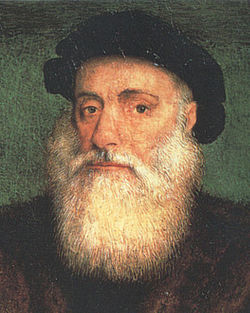
Vasco da Gama or Vasco de Gama, count of Vidigueira (Sines, Portugal, ca. 1460 or 1469 - Cochin, India, December 24, 1524), was a famous Portuguese navigator and explorer. In the Age of Discovery, he stood out for being the commander of the first ships that sailed directly from Europe to India, the longest ocean voyage made up to that time, longer (round trip) than a complete round the world tour in the equator. At the end of his life, for a brief period in 1524, he was Governor of Portuguese India with the title of viceroy. In his tribute, the great Portuguese community of the city of Rio de Janeiro named his sports team Club de Regattas Vasco da Gama, today one of the most important football teams in Brazil and, consequently, in Latin America. Vasco de Gama and his wife, Catarina de Ataíde, had six sons and one daughter: Francisco da Gama (count of Vidigueira); Estevão da Gama (1505-76), 11th governor of India; Paulo da Gama; Cristovão da Gama (1515-42), martyr in Ethiopia; Pedro da Silva da Gama; Álvaro de Ataíde, captain of Malaca, and Isabel de Ataíde da Gama. Vasco da Gama was one of those responsible for Portugal's success as a power. The Portuguese national epic, Os Lusíadas de Luís Vaz de Camões, refers largely to Da Gama's travels. They are named Vasco da Gama: A port city in Goa; A large lunar crater; Three soccer teams from Brazil and a Goa team, the Vasco Sports Club; A church in Kochi; A bridge and a tower in Lisbon. Vasco de Gama ranks 86th on the 100 list, the most influential figures in history according to Michael H. Hart. In 1994 he was represented on the Portuguese banknotes of 5000 shields. In 1998, the projects prepared to celebrate the V Centenary of the arrival of Vasco de Gama in India by the Portuguese government had to be abandoned due to the public anger that sparked the event.
TOP 11:
Pedro Álvares Cabral
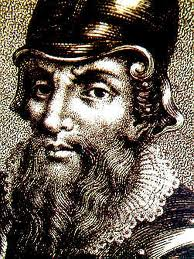
Pedro Álvares Cabral (or Pedro Álvarez Cabral, as it is traditionally known in Spanish) (Belmonte, 1467 or 1468 - Santarém, 1520 or 1526) was a Portuguese gentleman and navigator known for having been in command of the second Portuguese fleet to India , on whose trip he made the discovery of Brazil on April 22, 1500. On April 22, 1500, a Wednesday in the week after Easter Sunday, after forty-three days of travel after having departed from the coast African, Cabral spotted Mount Pascoal, on the southern coast of the current state of Bahia. The first day a first contact with the natives took place. On April 24, he sailed along the coast to the north in search of shelter, founding in the current bay of Santa Cruz Cabrália, near the current city of Porto Seguro, where he remained until May 2. Convinced that the newly discovered land was an island, Cabral gave it the name of Vera Cruz Island (ilha de Vera Cruz) and took possession of it by building a cross and holding a religious service, the first mass in Brazil, officiated on April 26, 1500, Easter Sunday, by a Franciscan, Father José de Anchieta, then Bishop of Ceuta. (The iron cross used in this service is in the Treasury Cathedral in Braga and was taken back to Brazil for the inauguration of Brasilia in 1960). Cabral took possession of the discovered land, on behalf of the Portuguese Crown and sent back to Portugal one of the smaller vessels, the ship in charge of supplies under Gaspar de Lemos, with the news, including the Pero Vaz Charter from Caminha.
TOP 10:
Erik the Red
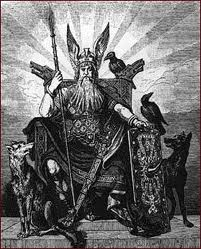
Erik the Red or Erik Thorvaldsson (son of Thorvald; in ancient Norwegian: Eirikr rauði Þorvaldsson), aka Erikur Raudi (* 950 - 1003), pirate, merchant and Viking explorer. He founded the first Viking settlement in Greenland. He was born in the district of Jæren, Rogaland, Norway, son of Thorvald Asvaldsson, so he is also known as Erik Thorvaldssen. El Rojo's nickname most likely obeys the killings he caused in the cities he attacked. While popular history credits Erik as the founder of Greenland, Nordics before him had already discovered and even tried to settle on those lands before. Tradition says that a man named Gunnbjörn Ulfsson was the first to spot this land mass. A century before Erik's arrival, strong winds would have dragged Gunnbjörn to that land, which he called Gunnbjörnarsker (Gunnbjörn Islands). The accidental nature of such a discovery, however, makes Erik the Red the greatest credit in Greenland's history, as its official discoverer. After Gunnbjörn, Snaebjörn Galti also visited Greenland. According to records of the time, this man's attempt to establish a population there ended in disaster. Within this context, approximately in 982 AD, Erik sailed to this mysterious and unknown land. He circled the southern end of the island (later known as Cape Farewell) and sailed the western coast. Over time it reached a part of the coast that was reasonably free of ice and therefore had - like Iceland - conditions that gave it a chance of future prosperity and development. According to the aforementioned saga, Erik spent three years of his exile exploring this land. He named it "Greenland" ("Green Earth"). He spent the first winter there in Eiriksey, and the second in Eiriksholmar (near Hvarfsgnipa). The following summer he explored the entire coastline to places quite north, such as Snaefell or Hrafnsfjord. When his exile ended, he returned to Iceland and brought great stories about that "green land." Erik baptized that land with a much more suggestive name than "Iceland" ("Land of Ice"), in order to attract Icelandic settlers, since he believed that with this people would feel more willing to participate in colonization. To create a lasting establishment in Greenland Erik needed as many people as he could attract. His plan worked quite well, and many people - particularly those "poor people of Iceland" and those who had suffered the ravages of the recent famine - were convinced that Greenland could be their great opportunity. After spending the winter in Iceland, Erik returned to Greenland the following summer, in 985 AD, this time with a large number of settlers, who established the first two settlements is the southwestern coast: the eastern settlement (Eystribyggð), in which today is Julianhåb, where Erik had his farm called Brattahlíð; and the western settlement (Vestribyggð), in the current Godthåb (over time, a medium settlement developed, but many experts believe it was part of the Occidental). Both settlements, located on the southwestern coast, proved to be the only areas where agriculture was possible. During the summer, when the weather was warmer, the settlers sent true armies northward, in Disko Bay, over the Arctic Circle, to hunt. Thus they obtained seal meat, whose skin was also usable as clothing, and ivory walruses, narwhals or whales stranded on the coast, if they were lucky. It is likely that these expeditions had met the Inuit, who still did not inhabit the eastern part of the island. History says that Erik and his wife Theodhild had four children: a daughter, Freydís Eiríksdóttir, and three sons, the also famous explorer Leif Eriksson, Thorvald and Thorsteinn. Erik was a fervent defender of Nordic paganism, unlike his son Leif and his wife, who built the first Christian church in America in the courtyard of his farm. Despite what has been speculated, it seems unlikely that Leif was the pioneer of Christianity in Greenland. Leif Eriksson became the first Viking and European to explore the land of Vinland (today part of Newfoundland and Labrador, Canada). Legend has it that Leif invited his father for the trip, but that he fell from his horse on the road, and taking this as a bad omen, he decided to stay. Erik died the first winter after his son's departure.
TOP 9:
Americo vespucio
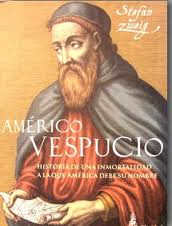
Amerigo Vespucio (in Italian Amerigo Vespucci - March 9, 1451, Florence, Italy - February 22, 1512, Seville, Spain) was an Italian navigator who worked in the service of the kingdom of Portugal and the Crown of Castile. He was considered the first European to understand that the lands discovered by Christopher Columbus formed a new continent; for this reason the cartographer Martín Waldseemüller in his map of 1507 used the name "America" in his honor as a designation for the New World. The often fanciful and contradictory account of his travels has placed him as one of the most controversial figures of the age of discovery. Since Vespucio announced the discovery of the new continent, it had received several names, whose application and acceptance was generally regional. Thus, the Castilians called it "Indias" or "The great Land of the South"; the Portuguese, "Vera Cruz" or "Tierra Santa Cruz". Some cartographers used "Land of Brazil" (which however alluded to an imaginary island), "Land of Parrots", "New India", or simply "New World". In the printing house of the abbey of Saint-Dié-des-Vosges in Lorraine, France, several publishers worked who were impressed by the reading of the publications that sought to narrate the Vespucian feats: a copy translated into German from the Lettera and another Frenchman from Mundus Novus, of the many that circulated in Europe. Martin Waldseemüller, Universalis Cosmographia (1507). They decided to spread the news in the form of a small treaty called Cosmographiae Introductio accompanied by a Latin translation of the Lettera under the title "Quattuor Americi navigationes" ("Four Journeys of America"), and publish them in the form of a pamphlet. On April 25, 1507, the first two editions left the workshop. In chapter IX of the text it was suggested that the name of the New World should be "America" (feminine by analogy to "Europe", "Asia" and "Africa") in honor of those who recognized it as such: "ab Americo Inventore ( ...) quasi Americi terram sive Americam "(" From America the discoverer (...) as if it were the land of America or America ") It is not known with certainty which of the printers is the creator of the name. The Gymnase Vosgien ("Gym of the Vosges") was composed of Vautrin Lud, Nicolás Lud, Jean Basin, Mathias Ringmann and Martín Waldseemüller. Specialists prefer Ringmann or Jean Basin de Sandacourt, the translator of the Novus Mundus into Latin. Martín Waldseemüller, a leading German humanist and cartography professor who worked as a draftsman and proofreader of the group, inscribed the sonorous name on a large wall map titled Universalis Cosmographia that he included in the pamphlet. There it appears applied to South America (the first of the three americas to be called that). At the top of the map, on the left, next to a globe in whose hemisphere the Old World is represented, a portrait of Ptolemy appears; on the right, next to a globe similar to the New World, that of Vespucio. [38] In addition, Waldseemüller made a globular version, to be projected on a metal sphere, one of whose specimens would be given to the Duke of Lorraine. [8] The voice has such euphony and is so in tune with the words "Asia" and "Africa" that it immediately settled in the noreuropean languages. However, Waldseemüller himself rectified in a little later map, dedicated exclusively to America, entitled Tabula Terre Nove, and he did not use that name again in later maps, which also took time to be adopted in the Iberian Peninsula and its colonies, where the mostly used name remained for a long time that of "West Indies". In fact, the name of America was not used again on a map until the appearance of the copy of the map of Waldseemüller published by Petrus Apianus in 1520 with the title Tipus Orbis Universalis. A thousand copies were made of the Cosmographiae Introductio, but all of them were lost and remained so for three and a half centuries. By 1890, while preparing in Paris his Géographie du Nouveau Continent, Humboldt was able to find the whereabouts of the pamphlet. The world map was found shortly after, in 1901, when Professor Joseph Fischer discovered it in a forgotten book in Wolfegg Castle. The helmets used to make the sphere had been recovered in 1871. On April 9, 1511 Américo Vespucio dictated his will to his notary: he bequeathed most of his property to his wife and asked to bury his body in the church of San Miguel de Seville or, if not possible there, in that of San Francisco. He ordered a requiem mass and thirty-three masses to the Holy Amador, and he paid two thousand maravadíes to beg for his soul: He sent the Holy Trinity and the Holy Mary of Mercy and the other commandments accustomed to each
TOP 8:
Juan Sebastian Elcano
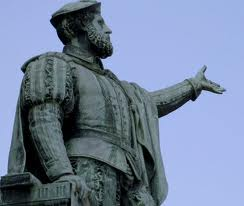
Juan Sebastián Elcano, also written by Juan Sebastián del Cano or Juan Sebastián de El Cano (Guetaria, Guipúzcoa, Spain, 1476 - Pacific Ocean, August 4, 1526), was a Spanish sailor who participated in the first round the world, staying at front of the expedition after the death of Fernando de Magallanes. Born in Guetaria (Guipúzcoa), Spain, in 1476, being the son of Catalina del Puerto and Juan Domingo Elcano. From a young age, he enrolled in fishing and commercial boats, so he acquired great marine experience. In 1509 he was part of the military expedition against Algiers, which was led by Cardinal Francisco Jiménez de Cisneros. Upon his return, he settled in Seville, and it was there that he learned of the project that was being prepared by the Portuguese sailor Fernando de Magallanes to discover a route to the Indies by the West, through a passage or strait through South America , which will lead to the islands of spices without the need to border the African continent or cross Portuguese domains. That was how in 1519 Elcano enlisted in the Magellan expedition as a countermaster of the Concepción ship, one of the five that made up the squad. King Carlos I of Spain granted him an annual income of 500 gold ducats and, as a shield, a sphere of the world with the Latin legend: Primus circumdedisti me ("The first one that turned me around"). The Spanish Navy school ship Juan Sebastián Elcano bears his name, in honor of his outstanding role in the first circumnavigation of the Earth. After granting a will on July 26, [5] he died on August 4, 1526 aboard the nao Victoria when he participated in the expedition of García Jofre de Loaisa to the Moluccas Islands.
TOP 7:
Fernando de Magallanes
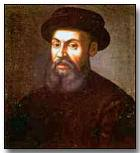
Fernando de Magallanes, also known as Hernando de Magallanes (Sabrosa, North Region, Portugal, spring 1480 - Mactan, Philippines, April 27, 1521) (in Portuguese Fernão de Magalhães), was a Portuguese navigator. At the service of the King of Spain, he discovered what today is called the Strait of Magellan, being the first European to pass from the Atlantic Ocean to the Pacific Ocean, until then called the South Sea. He began the expedition that, led at his death by Juan Sebastián Elcano, would achieve the first circumnavigation of the Earth in 1522. On August 10, 1519, the departure of the five-naval squadron was announced in Seville, led by Fernando de Magallanes who, descending through the Guadalquivir, it reached Sanlúcar de Barrameda, a port that overlooks the Atlantic Ocean. During the following weeks, the squadron was finished and other matters were resolved, while Magallanes himself granted a will in Seville on August 24. On September 20, the expedition definitely set sail from Sanlúcar de Barrameda (Cádiz), with the intention of finding the sea passage to the territories of the East Indies and looking for the path that, always traveling through Castilian seas (according to the Treaty of Tordesillas), arrived to the islands of the Spices, what was the so-called westbound route, which Christopher Columbus had already sought. After arriving in the Canary Islands, they passed the Cape Verde Islands and the coasts of Sierra Leone, touching the lands of what is now Rio de Janeiro on December 13. They continued south, passing through the Río de la Plata (already discovered by Juan Díaz de Solís in 1516), in March 1520, and reached the bay of San Julián, which they explored in search of a possible passage. Magellan, in view of the arrival of winter, decided to land there until spring. The inhospitableness of those places and the rationing of foodstuffs to which they were subjected fostered discontent among the crew and the desire to return. There was a conspiracy against Magellan led by Gaspar de Quesada, captain of the Conception, and the seer Juan de Cartagena, who had been relieved of the command of the San Antonio. Although the insurrection ignited in three of the ships, Magellan managed to quell it. One of the rioted captains was killed and the rest under trial, in which Quesada was sentenced to death and Cartagena abandoned on the coast. Tile commemorating the Magallanes-Elcano Expedition, in Sanlúcar de Barrameda. After that event they arrive on November 1, 1520 until what they would call "Strait of all saints" (in honor of that day), which will be called later narrow of Magellan. Crossing it was very difficult, given the complicated terrain. To do this, a ship was going ahead in exploration looking for the best way and returning on its own steps to be followed by the rest to the explored area. Once these minute stages were completed, they managed to leave the "labyrinth" towards the Pacific Ocean, which they baptize with such a name (which would remain, making the former one of the South Sea forget) because their path does not cross any storm. The Magellan-Elcano Expedition was plagued with setbacks and difficulties. The bad luck of Magellan wanted that in the long three-month course between the Strait of Magellan and the Moluccan Islands he did not discover any point of firm land, so that famine and scurvy whipped his crew, to the point that he they paid large coins for a simple rat to devour. The water rotted, scurvy appeared and the men ate even softened leather and sawdust. Antonio Pigafetta relates: "The cookie we ate was no longer bread but a dust full of worms that had devoured all its substance. In addition, it had an unbearable foul odor because it was impregnated with rat urine. The water we drank was putrid and smelly. For not starving, we have been forced to eat the pieces of cowhide that covered the main mast so that the ropes do not spoil against the wood ... Very often, we were reduced to feed on sawdust; and the rats, so disgusting to man, had become such a sought-after food, that it was paid until half-ducated for each of them ... And it was not all. Our greatest misfortune came when we were attacked by a kind of disease that inflated our jaws until our teeth were hidden ... ". Antonio Pigafetta. Chronicler of the Magallanes Monument expedition in Mactan (Philippines) erected by the Government of Isabel II La Nao Victoria de Magallanes Statue of Lapu-Lapu, national hero of the Philippines for killing Magallanes in Mactan. This tribal chief is considered the first Filipino to repel the arrival of Westerners. Although historians consider that it was not him, but two other subjects
TOP 6:
Juan Ponce de León
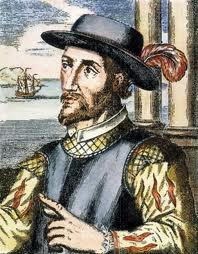
Ponce de León and Figueroa (Santervás de Campos, Valladolid, it is believed that on April 8, 1460 - Cuba, July 1521) he was the Spanish conqueror of Puerto Rico and discoverer of Florida. Of noble descent, he was a page of Fernando the Catholic in the court of Juan II of Aragon, and fought in the conquest of the kingdom of Granada. He doubts if he made his first trip to America with Christopher Columbus in 1493, or with Ovando in 1502. In any case, he collaborated with him in the conquest of Hispaniola and received from him the task of conquering the nearby island of San Juan Bautista or Borinquén (Puerto Rico) in 1508. Despite the opposition of Diego Colón, he was appointed governor in 1510. The island was submitted without difficulty, thanks to the conversion of the Agüeybaná chief; Ponce de León was able to dedicate himself to the foundation of cities and the exploitation of gold. But, after the death of the cacique, the Amerindians revolted against the Castilian domination and the regime of encomiendas to which they had been subjected to forced labor. After a hard fight, Ponce de León imposed on the natives and took bloody reprisals. Later he discovered an area to the north which he called La Florida, since it was discovered on Easter Sunday, called "Easter Florida" in Spain, for always playing at the beginning of spring. He spent the rest of his life looking for the fountain of eternal youth, which according to a legend was in that place. It is likely that Ponce de León first arrived in the New World where Cockburn Town is currently located, on the Grand Turkish island, in the Turks and Caicos, but soon settled in Hispaniola. He collaborated in the conquest of the Taíno people, in the eastern part of Hispaniola. For this participation, he was rewarded with the position of governor of the newly created province of Higüey. During his stay, he heard the stories of the wealth in Borinquén. From that moment, he concentrated all his efforts in being able to go to that site, being granted the necessary permission. In 1508, Ponce de León founded the first settlement in Puerto Rico, Caparra, now San Juan. He was welcomed with open arms by Agüeybaná, a Taíno chieftain, and quickly took control of the island. Because of this, Ponce de León was appointed Governor of Puerto Rico in 1509. Ponce de León, along with other conquerors, forced the Taínos to work in the mines and build fortresses. A large number of Taínos died because of exposure to diseases brought by European sailors and the lack of immunity against these diseases. Ponce de León, however, became rich serving as governor. In 1506, after the death at the Convent of San Francisco de Valladolid de Cristóbal Colón - who had been appointed military governor of his discoveries -, the Spanish authorities refused to grant the same privilege to his son Diego. The Crown had then selected Ponce de León to colonize and govern the island of Puerto Rico. Meanwhile, Diego Colón had filed a claim in the superior court of Madrid and had won his rights: Ponce de León was removed from the office in 1511. Feeling that his good name had been stained and when he did not wish to serve Diego, he obtained the Title needed to explore the areas north of Cuba. According to a legend, Ponce de León discovered Florida looking for the fountain of youth. Although the stories of waters that returned vitality on both sides of the Atlantic were known, long before his arrival, the story that he sought these sources was not attributed to him until his death. In his General and Natural History of the Indies, of 1535, Gonzalo Fernández de Oviedo wrote that the conqueror sought the waters of Bimini to cure his sexual impotence. Something similar is written by Francisco López de Gómara in the General History of the Indies of 1551. In 1575, Hernando de Escalante Fontaneda, a survivor of a shipwreck who had lived with the Native Americans of Florida for seventeen years, had published his memory, in which located the source in Florida, and said that Ponce de León, as it was supposed, had searched there. Although Fontaneda doubted that the Castilian had really gone to Florida in search of the waters, the story was included in the General History of the events of the Castellanos of Antonio de Herrera in 1615. Ponce de León equipped three ships, running him with the expenses , and left on his voyage of discovery and conquest in 1513. On March 27 he spotted an island, but there was no possibility of berthing. On April 2, he arrived at the east coast of the newly discovered land at a point that is disputed, but is located somewhere on the northeast coast of the current State of Florida. He claimed her for Spain and called her the land «Florida», due to the flowering vegetation she saw, or because she arrived there during Easter. He then sailed south along d
TOP 5:
Hernan Cortes
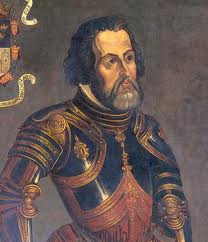
Hernán Cortés Monroy Pizarro Altamirano (Medellín (Badajoz), 1485 - Castilleja de la Cuesta, (Seville), December 2, 1547), Spanish conqueror of the Aztec empire (today the center of Mexico). I Marquis of the Valley of Oaxaca, governor and captain general of New Spain. In 1511 he participated in the expedition of conquest of Cuba led by Governor Diego de Velázquez, from whom he received land and slaves on the island. He became the mayor of Santiago de Cuba, although he was later imprisoned by the governor, accused of conspiring against him. Released, he married Diego Velázquez's sister-in-law, named Catalina Suárez Marcaida. At the end of 1518 Velázquez entrusted him with the command of the third expedition, after those of Francisco Hernández de Córdoba and Juan de Grijalva, to continue his discoveries on the Yucatan coast. But Velazquez soon distrusted him. Bernal Díaz del Castillo, author of True History of the Conquest of New Spain, tells that a jester from Velázquez, called Cervantes the madman, said to his lord, in the manner of jesters: «To the gala of my master Diego Diego, what captain have you chosen? That is from Medellín de Extremadura, captain of great. More afraid, Diego, do not get up with the army, which I judge as a great man in his things. Hernán Cortés continued, however, with the preparations for the expedition, and due to his great eloquence, skills of persuasion and suggestion, he soon managed to recruit more than 600 men for his cause. In anticipation of Diego Velázquez's cessation, Cortes' army rushed out of the port of Santiago de Cuba on November 18, 1518. As it was scarce of pavements, he had to stock up on them in the port of Trinidad and elsewhere. Finally, on February 10, 1519, the fleet left the coast of Cuba. That army consisted of 11 ships, with 518 infants, 16 horsemen, 13 arcabuceros, 32 crossbowmen, 110 sailors and about 200 Indians and blacks as troop aides. They carried 32 horses, 10 bronze cannons and 4 falconetes. By captains were Alonso Hernández Portocarrero (who would later deliver the Indian lady Marina), Alonso Dávila, Diego de Ordás, Francisco de Montejo, Francisco de Morla, Francisco de Saucedo, Juan de Escalante, Juan Velázquez de León (relative of the governor) , Cristóbal de Olid, Gonzalo de Sandoval and Pedro de Alvarado. Many of these were veterans of the Italian war. Antón de Alaminos was the main pilot with experience in the two previous expeditions of Francisco Hernández de Córdoba and Juan de Grijalva. The worst stain on the Cortés service sheet is that he consented to the torture of Cuauhtémoc and the Tacuba chief, since the soldiers were thirsty for gold, and believed that he had to know where he was. Both were hanged in the year 1525 in the fatal expedition to Las Hibueras, for suspicion of treason. His enemies intrigued in the court of Emperor Charles V, accusing him of taking gold from the fifth royal and the cast to the conquerors and suspecting that he had given orders to poison his wife Catalina Juárez (see: Hernán Cortés and his obscure relationship with Catalina Xuárez) and several of those sent with real provisions. Banished from Mexico, he went to Castile to claim the governorship of New Spain, but only got the Marquisate of the Valley and gave him land near the current state of Oaxaca .. Hernán Cortés died on Friday, December 2, 1547 in Castilleja de la It costs, trying to return to his American possessions. King Carlos I recognized the facts of Cortes by granting a coat of arms for him and his descendants granted in Madrid on March 7, 1525: traher for your own and known weapons a shield that in the middle of the right hand in on the top there is a black eagle with two heads in white field that are the weapons of our empire and in the other half of the said half shield to the part of abaxo a golden lion in a red field in memory that you said hernando cuts and by your industry and effort you trux things to the state mentioned above and in the middle of the other half shield of the hand and left to the top three golden crowns in black field launa on the two in memory of Tress Lords of the great city of Tenustitan and his provinces that you won that he was the first muteccuma who was killed by the Yndios, temendole you prisoner and his brother told him that happened in the lord and he rebelled against us and I miss you of the said city and the other that happened in the said lord guauctemncin and held the rrevelion bliss until you beat him and turned on and in the other half of the said half shield of the hand and left to the part of abaxo you can bring the city of tenustitan armed on water in memory that by force of arms you won it and subjected to our lordship and by the border of the said shield in yellow field seven captains and lords of s
TOP 4:
Francisco Pizarro
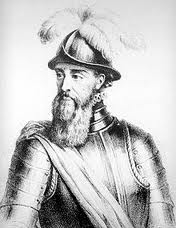
Francisco Pizarro González, Marqués (Trujillo, Cáceres, March 16, 1478 [1] - Lima, June 26, 1541) was the Spanish explorer and conqueror of Peru, governor of Nueva Castilla (current Peruvian territory) with government headquarters in The City of the Kings (Lima). He is remembered for having managed to impose himself on the Inca Empire with the help of several local chieftains, conquering the mentioned imperial state whose center of government was located in Peru today, and establishing a Spanish dependency on him. Although he had the title of Marquis, he was "Marquis without Marquis"; [3] his descendants had the title of Marquis of the Conquest. [4] However, it is very possible that he was granted the title of Marquis de los Atavillos, this being the title used by the chronicler Don Francisco López de Gomara in his General History of the Indies, chapter CXXXII. For his indigenous hosts he was known as Apu (Chief, Lord, General) or Machu Captain (Old Captain). In 1531 he arrived in Peru, who was living a civil war for the succession of the Inca emperor Huayna Cápac, killed by smallpox. There was a confrontation between his successors, Atahualpa and his brother, the Sapa Inca Huáscar. Francisco Pizarro was invited by the Inca Atahualpa to meet in Cajamarca, through an emissary very close to him. The emissary met the Spaniards in Cajas and in addition to bringing gifts (skinned ducks, vessels in the form of a fortress, etc.) he measured the forces of the Spaniards and invited him to continue his march through the Chancay Valley, near the town of Chongoyape to Cajamarca to meet with Atahualpa. Pizarro accepted and sent a thin Holland shirt and two glass cups to the Inca as a gift. Thus, he entered into Inca territory with 168 soldiers and 37 horses, went to Cajamarca, where he took prisoner to Atahualpa (November 16, 1532). Some time later, despite having received the highest rescue in history, he was ordered to execute for the crimes of uprising and for having ordered Huáscar to be executed, although Pizarro refused to burn the Inca alive. Pizarro maintained a close alliance with the nobility of Cuzco, a supporter of Huáscar, which allowed him to complete the conquest of Peru. After naming Inca a brother of Atahualpa, Túpac Hualpa, he went to Cuzco, capital of the Inca Empire, which he occupied in November 1533. His brother Juan was appointed city councilman. The conqueror married under the Catholic rite with the daughter of the Inca emperor Huayna Cápac, Quispe Sisa, baptized as Inés Huaylas. With her he had two children: a first daughter he called as his father, Francisca Pizarro Yupanqui and Gonzalo, who died young. Francisco Pizarro ordered the execution of Atahualpa, despite his apparent affection for him while he was a prisoner. On January 18, 1535, he founded the City of Kings on the coast, soon known as Lima, and Trujillo, which began the effective colonization of the conquered territories. Meanwhile, his brother Hernando, who had left for Spain to deliver the Quinto del Rey to the crown, returned bearing the title of marquis for his brother Francisco, and the one in advance for Almagro, which had been granted 200 leagues to the south of the territory attributed to Pizarro. Almagro, considering that Cuzco was within his jurisdiction, dismissed Juan Pizarro and imprisoned him with his brother Gonzalo. Francisco came from Lima and signed an agreement with Almagro in Cuzco, after which Almagro left for Chile. Upon returning from his unsuccessful expedition, Almagro tries to occupy Cuzco again, which, defended by his ruler Hernando Pizarro, was resisting a long siege by the rebel rebels under the command of Manco Inca, who had managed to flee from the Spanish people. Meanwhile Pizarro in Lima also suffered the siege of the city by Quizu Yupanqui, general and relative of Manco Inca, who after being about to take the capital was killed in battle. Pizarro's victory in Lima was due to his strategic alliance with the enemy ethnic lords of the Incas. In this particular case, he highlighted the alliance with the chief of Huaylas. These went to Lima with five thousand men, who fought alongside the Hispanics in the defense of Lima against the siege and attack of Quizu Yupanqui. After the arrival of Almagro in Cuzco, Manco Inca raised the fence, which Almagro took advantage of to imprison Hernando and Gonzalo Pizarro. After defeating the lieutenant of Pizarro, Alonso de Alvarado, in the Rota de Abanday, reaches a new agreement with Pizarro in Mala (1537), by which Hernando is released. The peace was short and both sides face each other again in the battle of Las Salinas (1538), near Cuzco. The almagristas are defeated and Diego de Almagro prosecuted, sentenced to death and executed by Hernando Pizarro, in the Plaza Mayor of Cuzco (July 8, 1538). After the death of Almagro, Pizarro dedicated himself
TOP 3:
Neil Armstrong, Michael Collins, and Edwin E. Aldrin
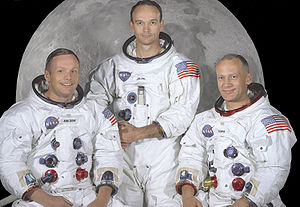
Neil Alden Armstrong (Wapakoneta, Ohio, USA, August 5, 1930) is a former NASA astronaut and the first human being to step on the Moon on July 21, 1969, on the Apollo 11 mission. As commander of Apollo 11, the first mission piloted to the Moon, Armstrong earned the distinction of being the first person to moon land and set foot on the lunar surface. On July 16, 1969, Armstrong, Michael Collins, and Edwin E. Aldrin began their trip to the Moon. Collins was the pilot of the command module. Aldrin, a systems expert, was the pilot of the lunar module and became the second human being to walk on the Moon. As commander of Apollo 11, Armstrong piloted the lunar module and achieved a safe landing on the lunar surface. At 2:56:20 (Universal Coordinated Time) on July 21, 1969, Neil Armstrong stepped on the moon and pronounced his famous phrase: "It's a small step for a man, but a great leap for humanity" ("That's one small step for a man, one giant leap for mankind "). Aldrin and Armstrong spent about two and a half hours walking on the moon, collecting samples, doing experiments and taking photographs. On July 24, 1969, the three men landed in the Pacific Ocean and were picked up by the USS Hornet aircraft carrier. The three Apollo 11 astronauts were honored with a parade in New York City as soon as they returned to Earth. Armstrong received the Medal of Freedom, the most important distinction offered to a civilian from the United States. Other distinctions from Armstrong received at the end of his mission included the NASA Service Award Medal, the NASA Exceptional Service Medal, 17 medals from other nations and the Space Congress Medal of Honor. Towards the beginning of the 1970s Armstrong acceded to the position of associate vice-administrator for the Aeronautics division of NASA Headquarters, in Washington, DC In that position he was responsible for the coordination and administration of research and general technology work of NASA related to aeronautics. After leaving NASA in 1971, he began his work as a professor in Aerospace Engineering at the University of Cincinnati from 1971 to 1979. During the years 1982-1992, Armstrong was president of Computing Technologies for Aviation, Inc., in Charlottesville, Virginia. After these works, Armstrong became chairman of the board of directors of AIL Systems, Inc., an electronic systems company in Deer Park, New York. Introverted, Neil Armstrong has been the most elusive of the Apollo 11 crew, although he continues to give lectures on the future of spaceflight and appears publicly when some anniversary of the trip to the Moon is commemorated. He currently lives in his country house located in Lebanon, Ohio.
TOP 2:
Marco Polo
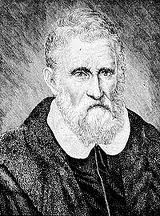
Marco Polo (September 15, 1254 - January 8, 1324) was a Venetian merchant and explorer who, along with his father and uncle, was among the first Westerners who traveled the silk route to China. It is said that he introduced gunpowder in Europe, although the first time it was used in the West occurred in the battle of Mist (Huelva) in 1262. The Polo (Marco, his father and his uncle) supposedly lived there for seventeen years before returning to Venice After his return, Marco Polo was 41 years old at the time and commanded a Venetian galley on the day when a naval battle was fought against the great rival of Venice, the Republic of Genoa, in 1298. The Genoese they arrested Marco Polo, took him to Genoa and there, in prison, Polo dictated to one Rustichello of Pisa the memories of his fabulous trip to Catai (China) and the return through Malacca, Ceylon, India and Persia. Rustichello wrote in a Franco-Venetian dialect the book known as Il Milione (The Million or "The Travels of Marco Polo") about his travels. The book was originally called Divisament du monde ("Description of the world"), but it became popular as Book of the Wonders of the World and, later, as Il Milione. It is general belief that such name came from the author's tendency to refer to large quantities; "millions" but it is more likely to derive from its own name "Emilione", abbreviated in Milione. There would therefore be no reference to this exaggeration in this denomination. Marco Polo is considered one of the great explorers, and an important narrator in travel literature. At the time of Marco Polo, trade in Europe followed a triangular system, in which luxury products from the East (silk, spices) occupied an important place. These, in the so-called silk route, crossed Central Asia and the lands controlled by the Saracens, being bought by Italian merchants (Venetians, Genoese, Pisans ...), who obtained great benefits by reselling them later in Europe. That is why Venice and other Italian ports gained in importance and began an aggressive trade policy to exploit these trade routes. Chroniclers after Marco Polo traced their origins to the “island of Curzola” in the Adriatic Sea (now Curzola, in Croatia) where an old house is still preserved, where it is said that he was born. However, modern historiography has serious doubts about this origin, since the surname Polo (of Venetian origin) is mentioned several times in cities in northern Italy. However, there are those who claim that his real name and surname were Marc Pol, a surname that, in fact, had his first appearance in Dalmatia. This last statement is given based on the records that appeared in the Venetian Yearbook Chronicon Iustiniani (1358). The family shield of the Pol contains three water birds, birds that received the name "pol" in South Dalmatia, while in Venice they were called "pola", word from which it is believed that the surnames "Polo" were derived and "Chicken" in Italy. On his deathbed, his family asked Marco to confess that he had lied in his stories. Marco refused, insisting: "I've only counted half of what I saw!" While most historians believe that Marco Polo actually arrived in China, recently some have proposed that he did not get that far, and that he simply told the information he heard from others. These skeptics point out that, among other omissions, their story fails to mention Chinese writing, chopsticks, tea, foot bandages or the Great Wall. Marco Polo was only in the northern region of China, specifically in the Grand Khan Palace. During the Ming dynasty, from 1368 to 1644, it was when the wall was extended more, that is, that at the time of Marco Polo's trip was not the defensive building built in its entirety, which explains the absence of mentions to it. Tea comes into contact with Europeans for the first time in India, when the Portuguese arrive there in 1497, since in India the use of tea was widespread; It is easy to deduce that before it was not important in the European tables. Moreover, it should be borne in mind that Marco Polo's descriptions focus on members of the Mongol ruling elite, who did not massively consume tea unlike their Chinese subjects; On the contrary, Marco Polo does allusion to milk-based drinks that are typically Mongolian. Similar is the question regarding the practice of girls bandaged feet, custom of the Chinese aristocracy but not Mongolian. It should also be noted that girls subject to this practice remained in their homes and not in the sight of foreigners. It is not very important that I do not mention Chinese writing, because many Europeans already knew it because
TOP 1:
Christopher Columbus
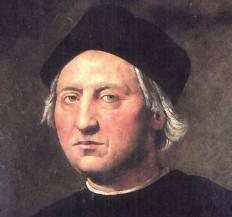
Christopher Columbus (place discussed, c. 1436-1456 [1] - Valladolid, Spain, May 20, 1506) was a navigator, cartographer, admiral, viceroy and governor general of the Indies in the service of the Crown of Castile, famous for having made the so-called discovery of America, in 1492. The origin of Columbus is the subject of debate and various places are postulated as his homeland. The thesis supported mainly is that it was born in Genoa, although the documentation that exists in this regard is not lacking in gaps and mysteries; In addition, his son, Hernando Colón, contributed to generating more controversy in this regard by hiding his origin in the book dedicated to his father. Because of this, multiple hypotheses and theories have emerged about its origins that make it Catalan, Galician, Portuguese or Jewish. Until the publication of the map of Martín Waldseemüller, in 1507, the American territory was known as "West Indies" and, although possibly Columbus was not the first European explorer of America, it can be said that he discovered a new continent for European civilization, being the first to draw a round trip route taking advantage of the Atlantic sea currents, a route that is still used today. He made four trips to America. His first expedition departed on August 3, 1492 from the port of Palos de la Frontera (Huelva), arriving in Guanahani (today in the Bahamas Islands) on October 12 of that year. This fact drove decisively the worldwide expansion of Europe and the colonization by several European powers of much of the American continent and its inhabitants. The name of Christopher Columbus in Italian is Cristoforo Colombo, and in Latin Christophorus Columbus. This anthroponym inspired the name of at least one country, Colombia and two regions of North America: British Columbia in Canada and the District of Columbia in the United States.

